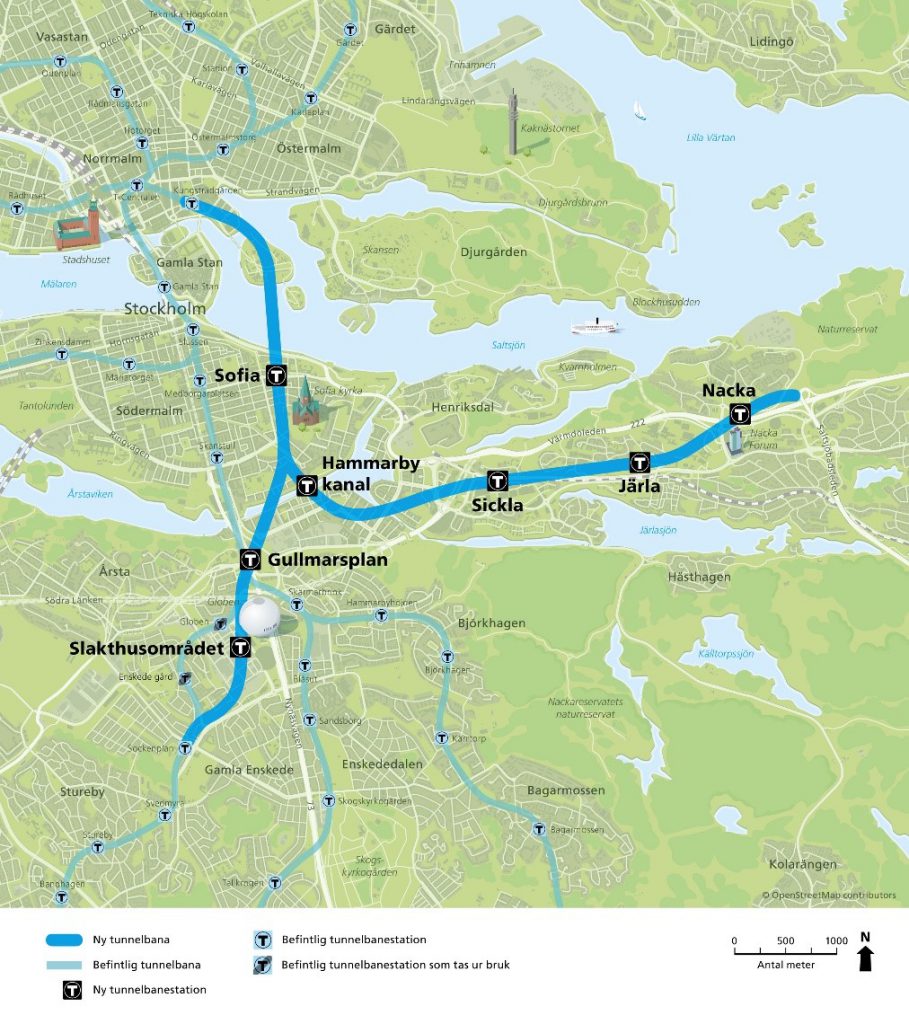Stockholm's metro extension project earns CEEQUAL rating of Excellent
Overview
Sustainability is an important consideration for the Extended Metro Administration, as demonstrated by the “Sustainability strategy for the Extended Metro Administration”. This was developed at an early stage in order to be implemented throughout the whole Stockholm Metro project, leading to the deployment of key goals and requirements for the design and construction phase. The work between T-Centralsen and Slussen earned a CEEQUAL (now known as BREEAM Infrastructure) rating of Excellent.
Background
The Stockholm Extended Metro project is aimed at increasing the city’s public transport capacity by extending the Stockholm Metro system. Whilst it is a major challenge to build a metro in a densely populated urban environment, this project is considered essential in order to support the sustainable growth of the rapidly developing region.
The role of CEEQUAL was to enable sustainability performance of the project to be measured against international standards, and to help the project achieve systematic and integrated sustainability work.
Solutions
People and communities
Consultations were conducted in several stages and shaped in order to reach those most affected and concerned. They were held in several places along the location of the Stockholm Metro extension and have also been conducted digitally through emails and newsletters, as well as exhibited documents at Region Stockholm and the municipality’s premises. Consultation documents have been published on the website and a link has been published in an advertisement and in mail letters.
Comments are communicated in writing and all opinions are evaluated by the project team to determine whether it entails revisions of the design work or regarding working methodology/implementation. Views are summarised and responded to in a consultation report which is published on the web so that the public can take part in the responses.
Land use and landscape
The process for choosing the location of the project has been extensive and has included many different factors and conditions. The new stations for the Stockholm Metro extension have been placed to be accessible to future passengers, while we strive to have as little impact as possible on the environment and human health during the construction period. This has been achieved through the JP process, which provides an opportunity to weigh different alternatives against each other and land on a solution that provides benefits for the residents.
The historic environment
It is challenging to build in a city with significant cultural heritage and history, such as Stockholm. The project has integrated previous investigations with extensive further investigations and inventories regarding the historical environment, to determine how it is affected and how this can be minimised. Checks were carried out continuously throughout the process.
Ecology and biodiversity
As far as possible, the project has avoided affecting the valuable natural environment. To this end, the team carried out investigations and produced inventories to map protected animal and natural environments. Additionally, specific requirements were set where there is a need for special handling.
The water environment
The legal process for the environmental permit has meant that the project has strict requirements to comply with regarding groundwater impact. Homes and business located within the project’s immediate environment are inventoried based on their sensitivity to groundwater lowering. As a result, groundwater levels are continuously monitored in accordance with a comprehensive control program and maintained if necessary via infiltration.
Transport
The Stockholm Metro extension is a sustainable transport project that expands the public transport opportunities within the region. The project increases the resilience of the region’s transport system by relieving the existing system and offering new itineraries.

Benefits
The use of CEEQUAL provided a driving force to deal with with issues that are not governed by law, including social issues. It also contributed to motivation and commitment among employees, triggering the competitive instinct to aim for high achievement. By using CEEQUAL, it helped to ensure that the project remained on track to achieve its sustainability ambitions.
The Stockholm Metro was extended by 11.3 km
All track tunnels were constructed in rock
2,180,000 m3 of solid rock were blasted away
57,000 m3 of concrete was used
